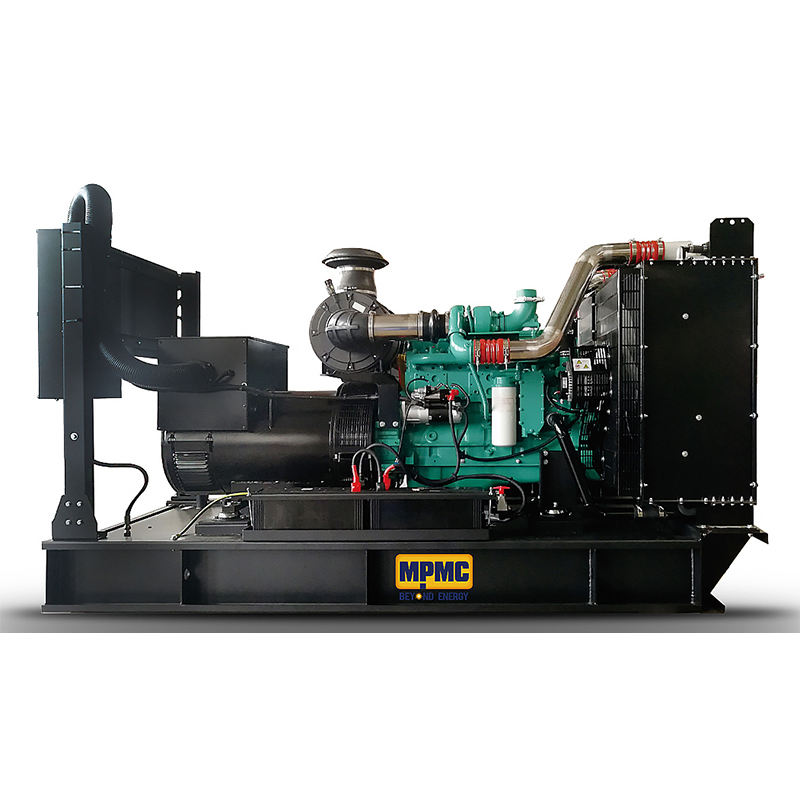
Choosing the right generator set can feel overwhelming. After all, you're making a significant investment in protecting your home or business from power outages. But the key to a successful purchase lies in understanding how generator sets are sized. This guide will walk you through the process, providing you with the knowledge you need to make an informed decision.
Understanding Your Power Needs
The first step in sizing a generator set is determining your power requirements. This involves creating a comprehensive list of all the appliances and equipment you need to power during an outage. Don't just think about the essentials; consider comfort items too. Will you need to power your air conditioning in the summer or heating in the winter? What about your refrigerator, freezer, sump pump, and security system?
For each item, you need to know its wattage, which is usually found on a label near the power cord or in the owner's manual. Adding up these wattages gives you your total running wattage. However, some appliances, like motors, require a surge of power upon startup, known as starting wattage. This surge can be significantly higher than the running wattage and is a critical factor in generator set sizing. You can find starting wattage information on the appliance label or by contacting the manufacturer.
Calculating Starting and Running Wattage
Now that you have your list, it's time to calculate the total starting and running wattage. Simply add up the running wattage of all the appliances you plan to run simultaneously. Then, identify the appliance with the highest starting wattage and add that to the total running wattage. This combined figure gives you a good estimate of the minimum generator size you need. Using a generator sizing calculator can also streamline this process, automatically factoring in starting wattages and providing recommendations based on your input. Accurately calculating these values is essential to ensure your generator set can handle the load. Think about it – what happens if your generator is undersized and can't power your essential appliances?
Considering Future Expansion
While calculating your current power needs is crucial, considering potential future needs is equally important. Will you be adding more appliances or equipment in the coming years? Are you planning any renovations or expansions to your home or business? Factoring in potential future loads ensures your generator set remains adequate for your power needs, preventing the need for costly upgrades down the line. Oversizing your generator slightly allows for flexibility and growth. It's always better to have a little extra power than not enough. How much extra should you consider? A good rule of thumb is to add 20-25% to your calculated wattage.
Types of Generators and Fuel Options
Once you know how much power you need, you can start looking at different types of generator sets. Portable generators are smaller and more affordable, ideal for powering a few essential appliances. Standby generators, on the other hand, are permanently installed and automatically kick in during a power outage, providing whole-house or business protection. Choosing the right type depends on your specific needs and budget. Fuel options also play a significant role in generator set selection. Common options include gasoline, propane, and diesel. Each fuel type has its own advantages and disadvantages in terms of cost, availability, and storage requirements.
Working with a Professional
Sizing a generator set can be complex, especially for larger homes or businesses. Consulting with a qualified electrician or generator specialist is highly recommended. They can help you accurately assess your power needs, recommend the appropriate generator size and type, and ensure proper installation. A professional can also advise on local codes and regulations, ensuring your generator set meets all safety requirements. Do you have specific questions you'd like to ask a professional before making a purchase?
Exploring Generator Sizing Calculators
While manual calculations can be helpful, generator sizing calculators offer a convenient and efficient way to determine the appropriate generator size. These online tools take your power requirements as input and provide recommended generator sizes, often categorized by application type (home, business, RV, etc.). They can also account for specific appliance starting wattages, ensuring you choose a generator that can handle the initial power surge. Exploring generator sizing calculators is a valuable step in the process, simplifying complex calculations and providing a clearer picture of your power needs.
Understanding Load Management
Even with a properly sized generator, managing your power load during an outage is important. Prioritizing essential appliances and staggering their usage can help prevent overloading the generator. Load management techniques ensure your generator runs efficiently and provides power to the most critical appliances when you need them most. Consider creating a prioritized list of appliances and implementing a schedule to manage their usage during an extended outage.
Maintaining Your Generator Set
Once you have your generator installed, proper maintenance is crucial for ensuring its longevity and reliability. Regular maintenance tasks include checking oil levels, changing air filters, and performing periodic load tests. Following the manufacturer's recommended maintenance schedule helps prevent costly repairs and ensures your generator is ready to perform when you need it most. Neglecting maintenance can lead to reduced performance and potential failure during a critical power outage.
Next Steps: Choosing the Right Generator






